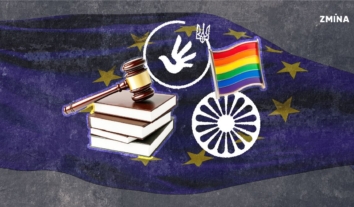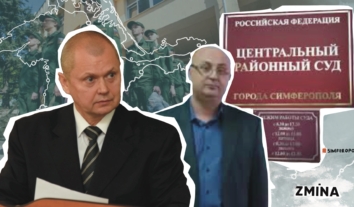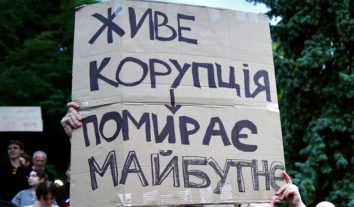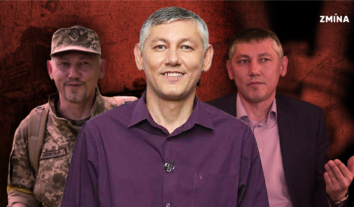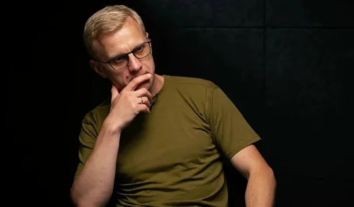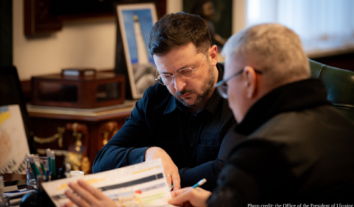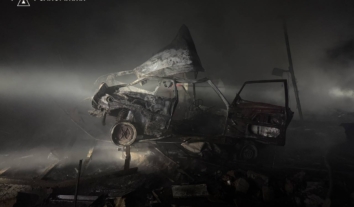Torture as a policy of suppressing Ukraine’s resistance to the Russian invasion – Report
ZMINA Human Rights Center collected evidence of how Ukrainians were kidnapped, interrogated, and tortured en masse by Russian occupying forces during the full-scale Russian invasion of Ukraine. According to human rights defenders, the Russian military treats the entire population of the temporarily occupied territories of Ukraine as a threat. Torture and cruel, inhuman, or degrading treatment of civilians is a part of the comprehensive policy of suppressing any resistance to the Russian invasion.
The analytical report “Torture and ill-treatment of the civilian population in Ukrainian territories under Russian occupation,” prepared by ZMINA, provides a detailed account of documented policies, locations, profiles of main targets among civilians, and portraits of typical perpetrators of Russian occupying forces in Ukraine who brutally mistreated people from the Kyiv, Kharkiv, and Kherson regions.
Human rights defenders concluded that incidents of torture and inhuman treatment of civilians were mainly sporadic and chaotic during the first weeks of the full-scale invasion of Ukraine in February 2022. With the military successes of the Ukrainian army throughout the year, the intensity and the scale of torture of civilians in the temporarily occupied territories of Ukraine grew. The longer the region was under occupation, the more systematic the abductions and torture became. In particular, the Russian occupying forces created a network of permanent “specialized” places of illegal detention and torture in the occupied territories. They also developed a system for so-called “filtering” of the local population by identifying and torturing those who might express disloyalty to Russia.
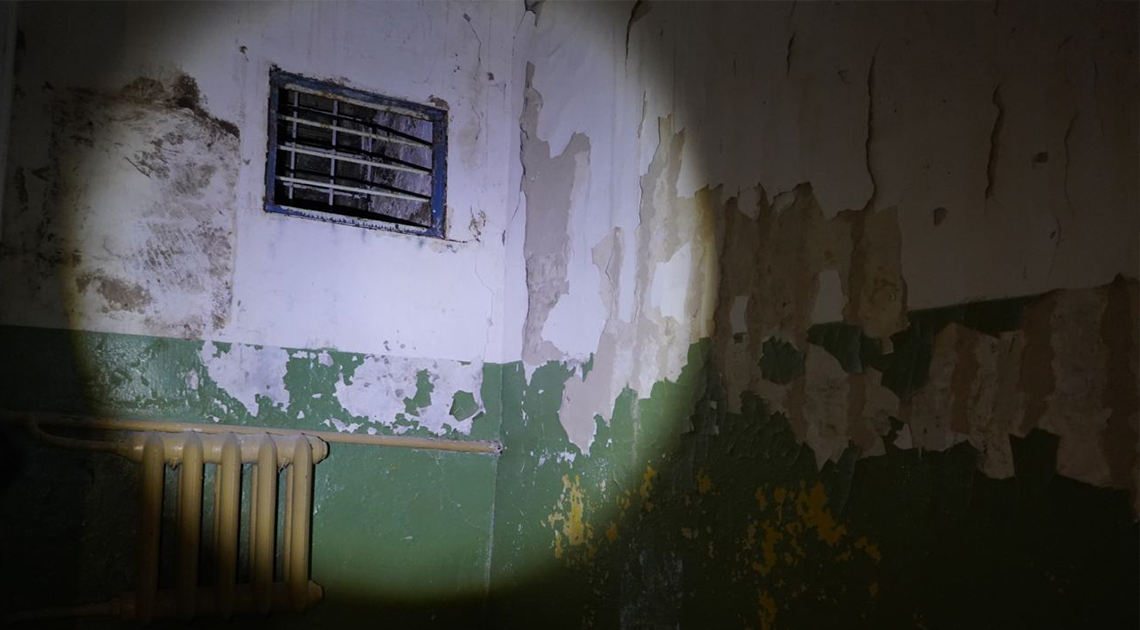 A photo of a place of detention. Yelyzaveta Sokurenko/ZMINA
A photo of a place of detention. Yelyzaveta Sokurenko/ZMINAWho was tortured by Russian occupying forces in Ukraine?
Human rights defenders documented 345 cases of cruel, inhuman, or degrading treatment and torture of Ukrainians in the Kharkiv, Kyiv, and Kherson regions. Forty-five cases were documented through in-depth interviews, and 300 were registered from the open-source data analysis. Among those interviewed, 28 were victims of torture or ill-treatment, and 17 were witnesses of such actions.
A third of all testimonies documented by ZMINA refer to the torture of current and former Ukrainian military personnel, as well as members of their families. People, who (even allegedly) served in the Joint Forces Operations in the Eastern part of Ukraine during 2014-2022, were the primary target for Russian forces to find, detain, and torture them. The report says the Russian occupying forces demonstrated the most extraordinary cruelty to these people.
Half of the interviewees shared about the torture of people not connected to the military: activists, volunteers, entrepreneurs, and people who publicly expressed pro-Ukrainian views.
Human rights defenders note that the classification of the torture survivors is partially conditional because the actual motives of the Russian occupying forces were often complex since they started such a vast number of people. Therefore, among the survivors of torture were a retired military man who actively demonstrated a pro-Ukrainian position, a public activist and an entrepreneur, and a volunteer with military relatives.
In the temporarily occupied territories, the Russians created a general atmosphere of terror and intimidation of the local population. Witnesses of torture often talked about cases of gratuitous aggression by the Russian military.
“Three Russians and […] a fellow villager were walking together along the road. One of them [the Russian] said something to him [the villager]. The man snapped. They immediately started beating him. The Russians beat this man with their hands, feet, and machine gun butts. They beat him for a long time. And you can do nothing about it because they have machine guns,” said one of the interviewees.
Human rights defenders also documented at least one case of Russian Muslim soldiers torturing a civilian because of ethnic and religious intolerance.
In addition, the Russian occupying forces detained and tortured older people, including those with chronic illnesses. For example, in Balaklia, Kharkiv region, the occupiers detained a 70-year-old photographer for 100 days.
From chaos to the systematic cruelty
Torture survivors and witnesses of war crimes from the Kyiv region with whom ZMINA spoke noted that the Russian military was initially disorganized. They did not have clear rules for dealing with the local population. It meant a higher chance of unpredictable Russian actions and a higher risk of extrajudicial killings.
The report also recorded cases where the occupiers used civilians as “human shields.” One of the torture survivors said that the Russians forced him and several other kidnapped Ukrainians to walk in front of the military equipment:
“We reached the asphalt road; then they [the Russian military] said: “Climb here,” and put us on the assault amphibious vehicle or AAV, exactly in the front. It started moving towards the [Ukrainian] positions. It was very cold,” the man recalls.
As of March 2022, the Russian occupying forces have not yet created a network of places of illegal detention, interrogation, and torture of the civilian population, as was the case later in the Kharkiv or Kherson regions. In particular, human rights defenders recorded a large number of reports of spontaneous extrajudicial executions of civilians and incidents of ill-treatment, torture, and rape during the first few weeks of the Russian invasion of Ukraine.
They note the unfavorable situation for the Russian military on the battlefield could be behind such actions.
War crimes against civilians could have been irrational acts of retribution for military defeats
According to researchers, from mid-March of last year, the Russian military began to perceive residents of the occupied districts of the Kyiv region as a potential threat. The population was forbidden to leave their houses and move through the streets, for which they could be killed. For instance, the report mentions at least one case of a civilian being killed for wearing camouflage-like clothing.
Human rights defenders note that at that time, the forces of the Russian Federation did not try to kill those disloyal to the occupation but destroyed all residents perceived as a “threat” for various reasons.
The longer the territories were under occupation, the more systematic incidents of brutal mistreatment of the residents became. The Russians developed and implemented a system of occupying administrations and controlling the captured territories. If Russian soldiers were mainly involved in kidnapping and torturing civilians at first, then over time, this function passed to representatives of occupying administrations, so-called “police bodies,” and representatives of the Federal Security Service of Russia.
During the occupation, the Russian occupying forces also created permanent “specialized” places of illegal detention and torture of civilians. The Prosecutor General’s Office of Ukraine recorded at least 55 such sites in the de-occupied territories and 60 in the temporarily captured ones. Typically, places of detention were organized on the premises of the local police stations, pre-trial detention centers, or administrative buildings.
At the same time, cases of brutal mistreatment of the local population are not limited to special places, according to the report’s findings. Many victims spoke of short-term detention and torture in their homes, garages, basements, and industrial or recreational facilities.
Human rights defenders note that the Russian occupying forces probably revised their approaches to interacting with the civilian population in the occupied territories of Ukraine after realizing the true scale of civilian resistance.
Tentatively from April-May 2022, “filtering” among the local population will begin in the temporarily occupied territories. Crimes against civilians are becoming more controlled, systematic, and pervasive.
Moreover, human rights defenders note that documents left by the Russian occupying forces in the de-occupied territories indicate that the widespread practice of illegal detention and torture of the civilian population was sanctioned at the level of the highest military and political leadership of the Russian Federation.
Methods Russians used: torture with electricity, batons, and rifle butts
Often, survivors of illegal abductions and detention suffered from torture, which was an inseparable element of interrogations. In particular, more than half of the interviewees talked about being beaten and abused by the Russian occupying forces during interrogations.
One of the most common methods of torture used by the Russian military was using an electric current. A so-called “field telephone” was often used for this purpose – wires from military equipment were connected to the victims’ limbs or genitals, and a current of various voltages was switched on.
Beatings with various objects were also common: metal and plastic pipes, batons, wooden sticks, rifle butts, and hands and feet. The Russian occupying forces often tried to beat people so as not to leave visible marks on their bodies. For this purpose, they hit the area of the chest, back, and belly, as a result of which the victims received cracks and fractures of the ribs. Human rights defenders also recorded one case where a man died from internal organ damage after being severely beaten by Russian forces.
The report also mentions documented cases where the Russian military deliberately broke the limbs of their victims. For this purpose, they stepped on the person’s limbs and face. The interviewees indicated that sometimes the Russians used the technique of repeated beatings for several days in a row. According to the torture survivors, this tactic was particularly traumatic.
ZMINA also documented information about specific cases of torture: beating on the head with a metal helmet, beating with sticks on the heels, constant beating to the same part of the body, and pouring water into the mouth through a towel draped over the face. They also recorded alleged cases of nail pulling and tooth extraction from open sources.
Often, the conditions of detention of civilians also turned into torture, the researchers note. Civilians were usually held in large groups in cramped premises without windows.
Civilians detained by the Russian occupying forces were also not fully fed and were denied medical care.
In addition to physical abuse, the Russian military also used constant psychological pressure on residents. Thus, detained civilians were often threatened with beating, mutilation, rape, or murder. The report also mentions cases where the Russian occupying forces threatened detainees that they would torture or kill their relatives.
Based on the research results, human rights defenders submitted information on 30 recorded cases of torture to the Prosecutor General’s Office of Ukraine. In addition, together with the torture survivors, they are preparing four individual appeals to the United Nations Special Rapporteur on Torture and three statements to the International Criminal Court.

